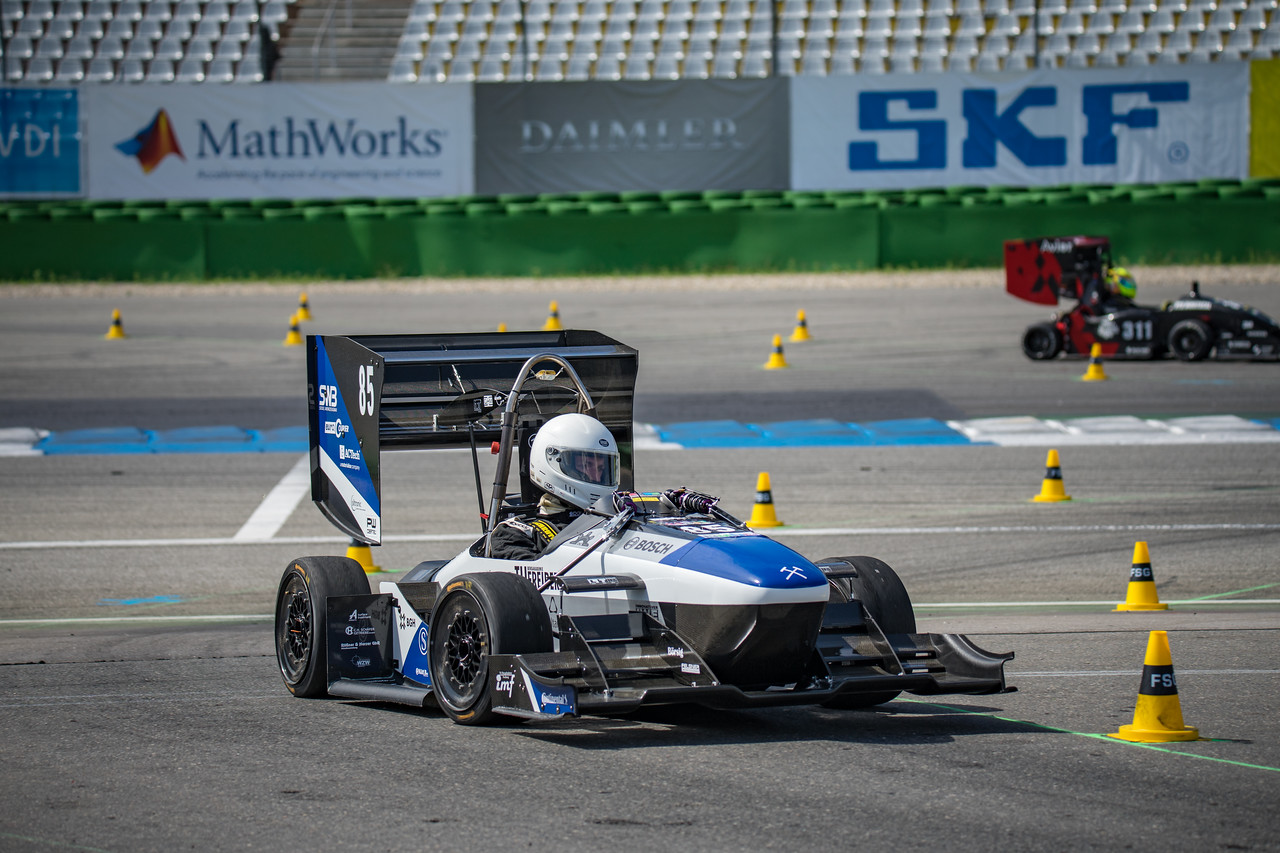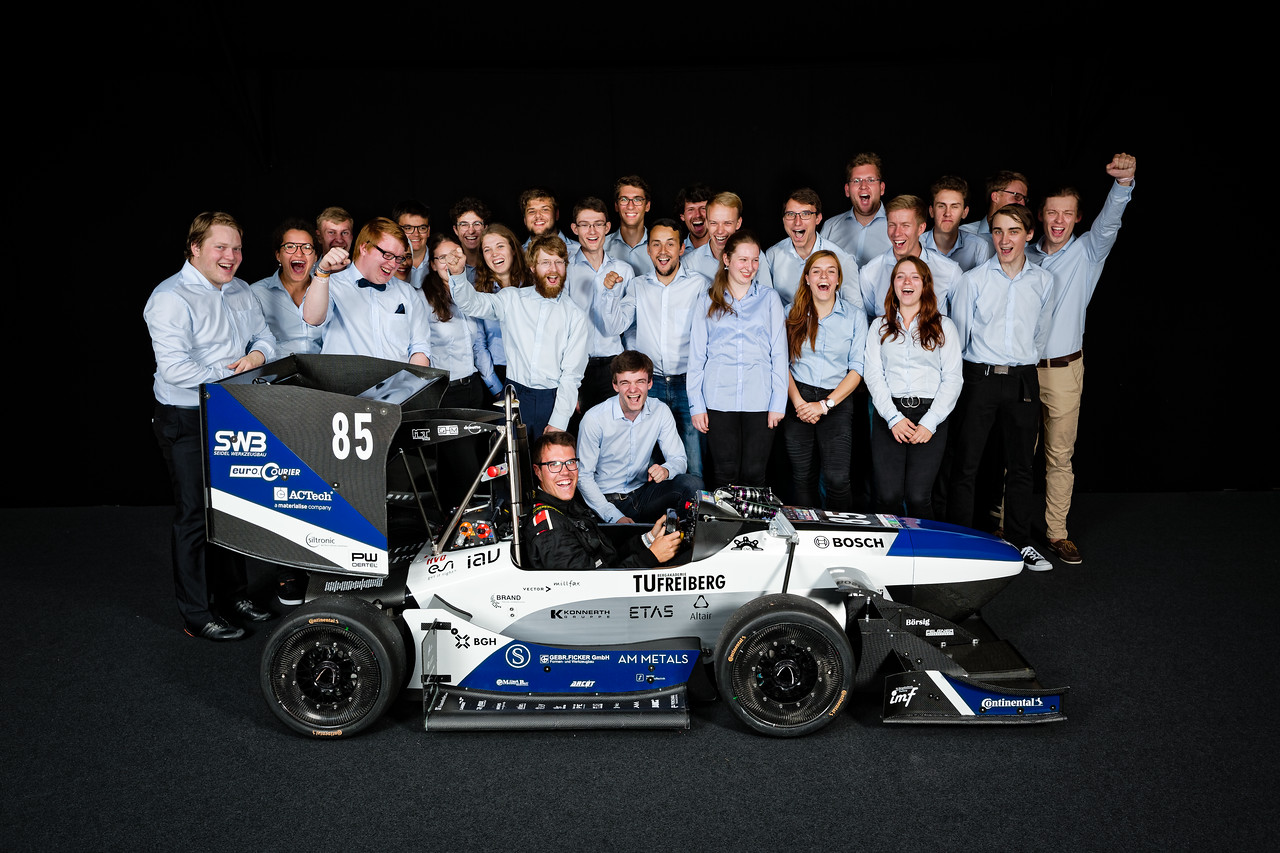What is Formula Student?
© Formula Student Germany / Johannes Klein
Fundamental idea
Student teams from all over the world design and manufacture a racing car within a year. Especially the Formula Student Electric is subject to strict rules. With their prototype, the students compete against other teams at international events. They take part in three static and five dynamic disciplines, judged by a specialist jury from motorsport and automotive industry.
The RT13 at the endurance event in Hockenheim © Formula Student Germany / Jonas Haertel
History
The racing series was founded in 1981 in the US as a university competition, named „SAE“ (Society of Automotive Engineers). As a European addition, the Formula Student was brought to life, with venues in Germany, England, Italy, Hungary, Austria and Spain. By now, there are nine official competitions worldwide: two in the US and one each in England, Australia, Japan, Brazil, Italy, Germany and Austria. Furthermore, the number of professionally organised, non-official competitions, such as FS Hungary and FS Spain, increased. In 2016, 115 teams from more than 34 nations and over 3000 students participated at Formula Student Germany in Hockenheim. Due to the 6000 visitors, the event gained national media awareness and was able to offer the ideal advertising platform for companies and universities of the racing teams. The atmosphere of the event is exceptional, the trust and candour overwhelming. Among each other, the teams support and offer guidance to their colleagues from other teams. The friendly mentality encourages everyone to deliver their best performance.
© Formula Student Germany / Shidhartha De
Disciplines
Being a design competition and not just a racing competition, there are two types of disciplines: dynamics and statics. For the dynamics, the car has to race, whereas for the statics it got different categories to compete in. Both categories make up 1000 points, that can be reached.
A fictional group of investors, represented by the judges, has to be convinced into building the racing car as a small batch production. Therefore, a professional presentation of 10 minutes length is held and questions from the judges are answered.
All expenses for installed parts on the car, even the self-made components and their manufacturing processes, need to be disclosed. Within a discussion with the judges, the cost-consciousness of the team with regard to the car is tested.
The manufacturing as well as the engineering work, such as the use of new technologies and refined detailed technical solutions, are stated in the design report and presented to the judges.
A route in shape of an eight with a diameter of 15,25m per circle is driven twice each. Every team is allowed to have two different drivers, having two tries each. The best time of all attempts will be counted.
The car is accelerated over a distance of 75m, from zero to maximum. Every team is allowed to have two different drivers, having two tries each. The best time of all attempts will be counted.
In conjunction with the endurance, the energy consumption of the racing car is measured.
At the autocross event, a distance of about 800 meters has to be driven through in a handling course of straights, hairpins and slaloms at the maximum possible speed. There are no training attempts and the first measured time will be the first scoring. Every team is allowed to have two different drivers, having two tries each. The best time of all attempts will be counted.
On a track similar to the handling course of the autocross, the car has to be driven a distance of 22 km. There is a driver’s change after the first 11 km, for which each team has three minutes of time. Usually, there are 3 to 6 cars on track at the same time, though they only race against the time, not each other. A race one to one is avoided by passing zones for slower cars.


